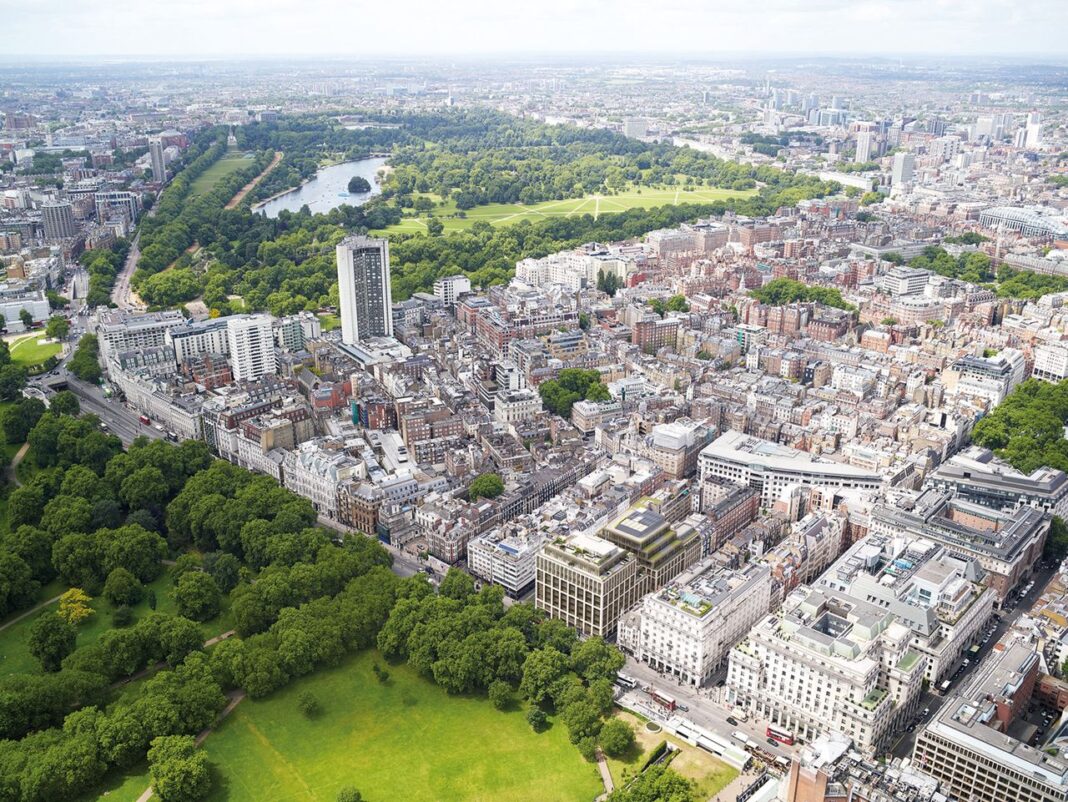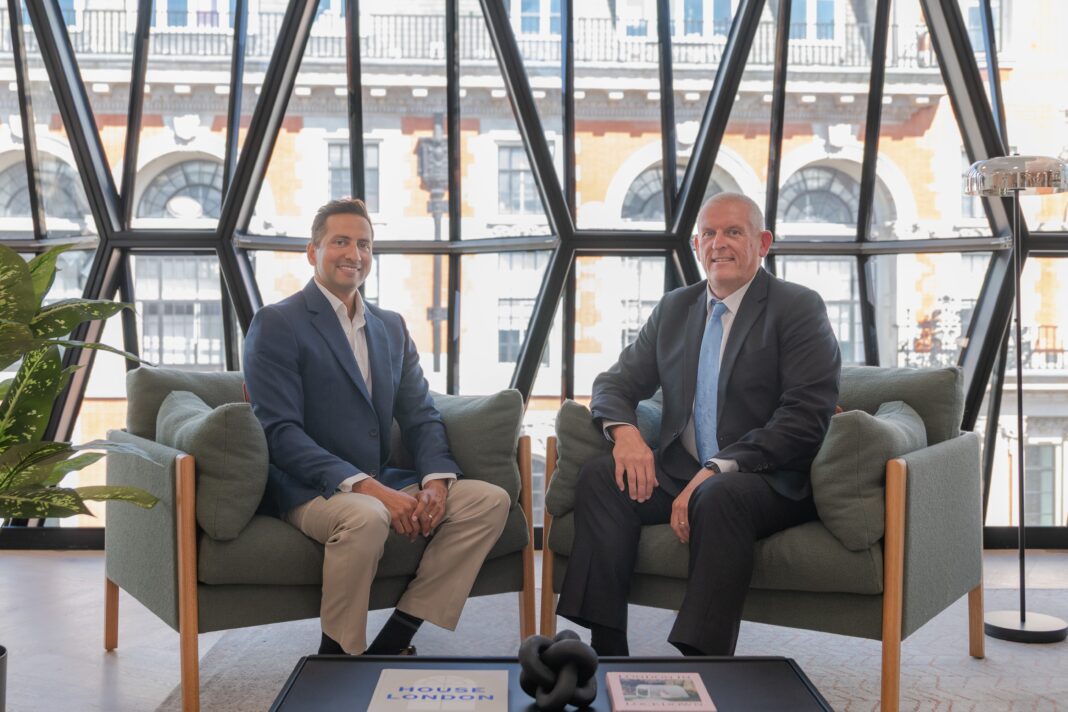Mayfair has emerged as London’s third-largest regeneration zone, with more than £4 billion of new development and over £100 million of public realm investment transforming the district, according to new research.
A report commissioned by Mayfair estate agent Wetherell shows that the district now ranks behind only Earls Court and Battersea Power Station as the most valuable regeneration hubs in Prime Central London.
The study, The Glamour and Psychogeography of Mayfair, draws on data from Westminster City Council, the Mayfair Neighbourhood Forum, environmental group Nature Sacred, and principal landowners Grosvenor, Caudwell, The Crown Estate, Reuben Brothers and The Portman Estate.
The survey identifies 13 public realm schemes either completed or planned across the district, together worth more than £100 million.
FLAGSHIP SCHEMES
These include the creation of two new public squares, three pedestrian boulevards, two upgraded garden squares, five pavement-widening projects and a new green corridor through the heart of Mayfair.
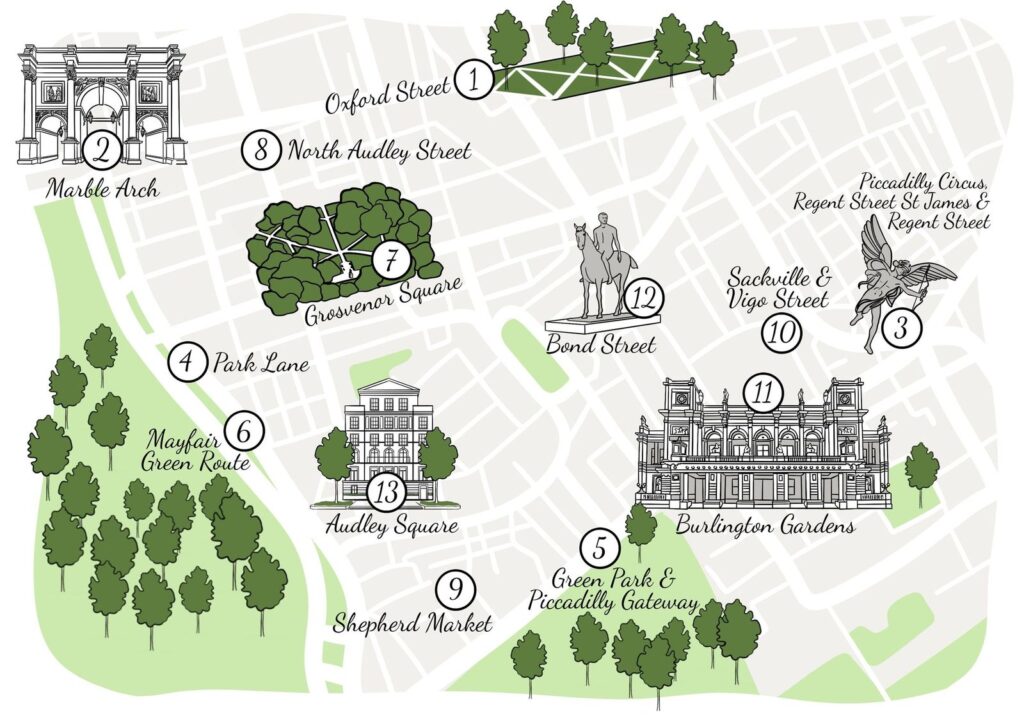
Picture credit: Wetherelli
The investment forms part of more than £4 billion of development underway, positioning Mayfair ahead of Elephant & Castle (£4 billion) and level with Kings Cross and Queensway (£3 billion each) in total gross development value (GDV).
Among the flagship schemes is 1 Mayfair, a £2 billion residential development by Caudwell, which will deliver 24 principal homes priced from £35 million and five staff studios.
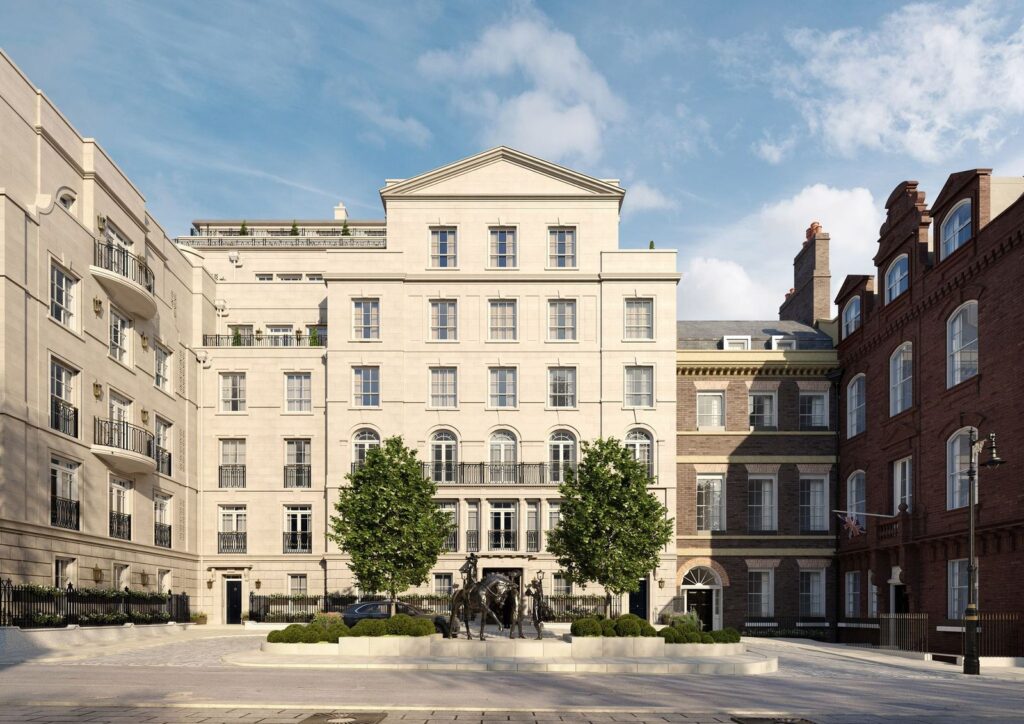
Pic credit: Caudwell
It will also create Audley Square, the first new public square in Mayfair since 1731, with a sculpture by Philip Jackson, the royal sculptor to the late Queen Elizabeth II, and extensive new planting and paving.

John Caudwell, Founding Director of Caudwell, says that with the new Audley Square and sculpture he “wanted to capture that sense of romance in the days when Mayfair would have been full of horse-drawn carriages and lots of stables, a really beautiful talking point.”
To the south of the district, the Reuben Brothers are leading a £1 billion regeneration of The Piccadilly Estate, which includes the creation of Shepherd Market Square.
The project will pedestrianise the existing cul-de-sac, adding York stone paving, new trees, street seating and improved lighting.
INTERACTIVE AREAS

Jamie Reuben, principal at Reuben Brothers, says: “We’re creating a new square, working with Westminster City Council to make the area more interactive.
“The idea is to get people more engaged in Shepherd Market, there’s going to be increased pedestrianisation, a more interactive mix to the retail, and more events as well, to create a community vibe.”
ONE CARRINGTON
The wider Piccadilly Estate redevelopment will also provide One Carrington, a new residential scheme of 28 apartments priced from £2.95 million, The Carrington private members’ club operated by Robin Birley, and Cambridge House, a luxury boutique hotel within a restored Grade I listed mansion.
Three new “Parisian-style” pedestrian boulevards are also planned, which will reshape traffic flow and improve walking and cycling routes across Mayfair.
The first is the £150 million pedestrianisation of Oxford Street, due to begin in 2027, stretching from Orchard Street to Great Portland Street before extending to Tottenham Court Road in 2028.
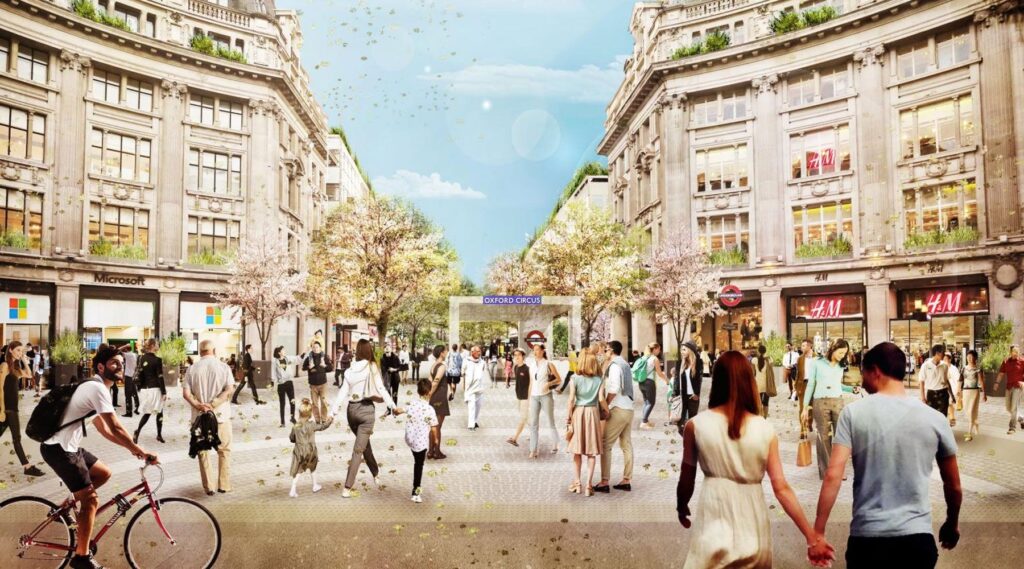
The project has been transferred from Westminster City Council to the Mayor of London and Transport for London following local opposition.
A second boulevard will run from Regent Street to Waterloo Place as part of The Crown Estate’s £340 million refurbishment of its West End portfolio, while a third, proposed by the Mayfair Neighbourhood Forum, would pedestrianise the Mayfair side of Park Lane.
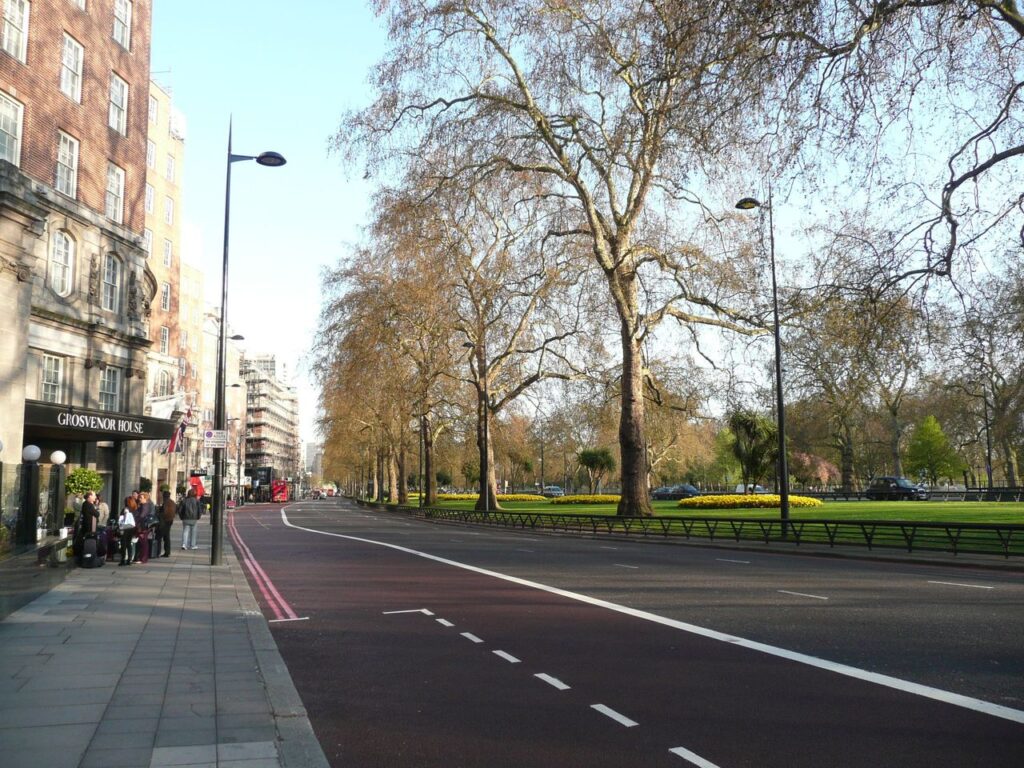
Pic credit: Mayfair Neighbourhood Forum
RESPONSIBLE PLANNING
Commenting on the wider push for pedestrianisation, Caudwell says: “I think responsible town planners should always look at how to evolve life in their areas for the benefit of people.
“I think it’s natural and progressive.”
“Cars are dreadfully polluting so these pedestrianised areas will cause a bit of inconvenience for some motorists and they do come at a cost, but it beautifies the Mayfair area completely, so I think it’s natural and progressive.”
Recent projects have already boosted footfall and visitor numbers. Improvements to Bond Street, Burlington Gardens and the Mayfair Green Route – centred on Mount Street Gardens – have widened pavements, introduced new seating and trees, and encouraged greater pedestrian movement.
COMMUNITY-LED INITIATIVE
The survey says that successful public realm projects rely on close cooperation between local authorities, landowners and residents.
It cites the Mayfair Green Route, developed by the Mayfair Neighbourhood Forum and environmental group Nature Sacred, as an example of a community-led initiative that has enhanced the area’s character.
Work is also continuing on the redesign of Grosvenor Square Gardens, which began earlier this year and is due for completion in 2026.
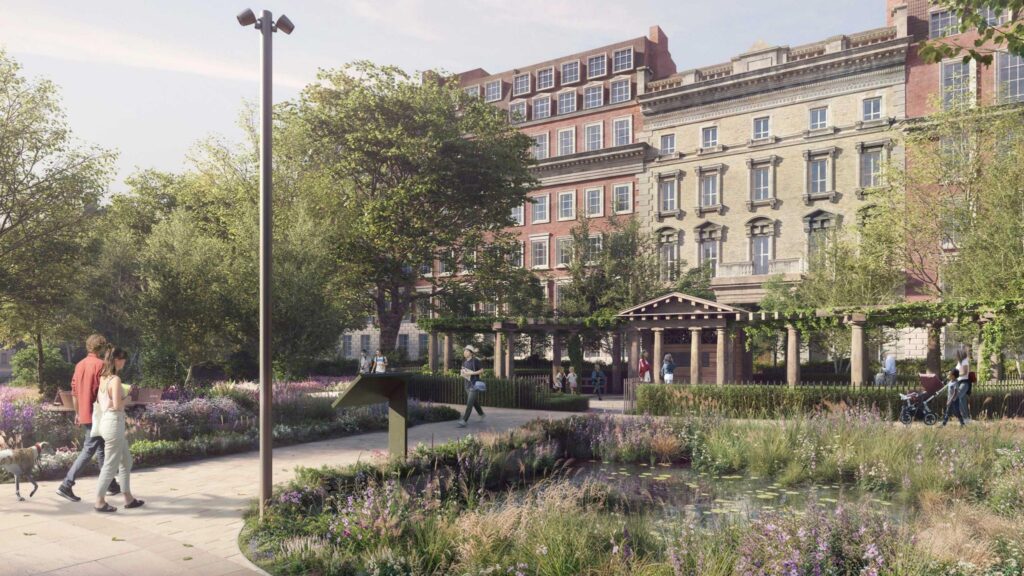
Pic credit: Grosvenor
Designed by architects Tonkin Liu, the project will increase biodiversity through the planting of 150,000 new plants and bulbs, 26 trees and new wetland ponds, echoing the Victorian-era layout of the square.
According to data from LonRes, Mayfair’s residential property values now stand 52% higher than the Prime Central London average, up from 27% in 2012.
In contrast, Knightsbridge, which lacks the same level of coordinated public realm investment, has fallen to just 18% above the central London average, down from more than 50% a decade ago.
QUALITY STREETS
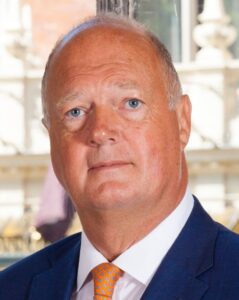
Peter Wetherell, founder and executive chairman of Wetherell, says: “Mayfair’s landowner-developers are investing heavily in the public realm and working with Westminster City Council to carefully curate the quality of the streets, squares and commercial tenants.
“This is good for upholding long-term real estate values and attracting a strong influx of buyers and tenants because people want to live, work and play in an attractive high-quality environment.
“If you look at Prime London locations where there is no continuous ownership, joined-up investment into the public realm and curation of commercial tenants, it has a negative impact on property values.”
BETTER THAN KNIGHTSBRIDGE
And he adds: “Investment in the urban fabric is why Mayfair has overtaken Knightsbridge as London’s premier address and perhaps the best example of poor public realm investment in the heart of London is adjacent Pimlico, which was auctioned off by Grosvenor in the 1950s.
“As a result, Pimlico property values are significantly lower than neighbouring Belgravia and Mayfair and the address is seen as far less desirable for wealthy potential buyers and investors.”
TOP OF THE MONOPOLY BOARD
Caudwell says: “Over the last ten years Mayfair has already been transformed.
“It has worked its way back up to the top of the Monopoly board, and it’s going to keep going with all of these green spaces and beautiful developments. I think the future of Mayfair is extremely bright.”
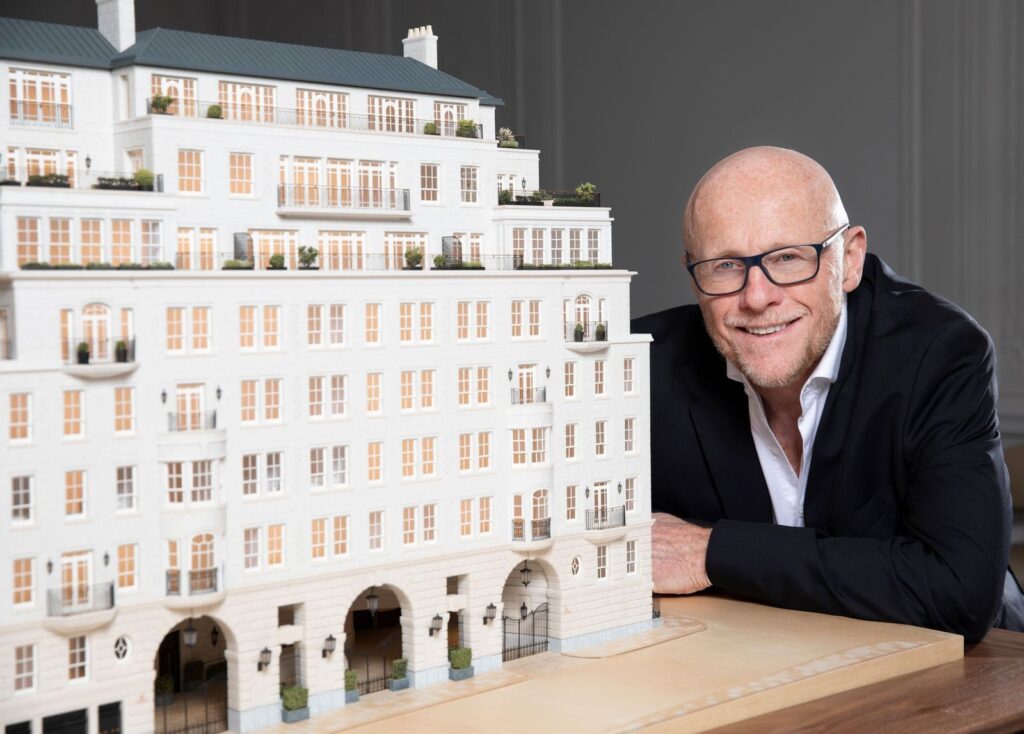
Pic Credit Caudwell – David Woolfall
And Reuben adds: “The transformation of Mayfair in recent years has been remarkable. The amount of investment coming in over the last decade has been enormous.
“Westminster City Council has played a key role in the curation of new development and preserving the area’s historic backbone. It’s very thoughtful, purposeful progress.”



